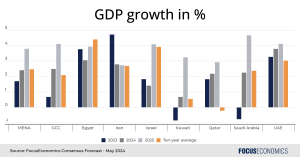Published
15 seconds ago
on
June 30, 2024 Graphics/Design:
See this visualization first on the Voronoi app.
Ranked: The Countries Sending the Most Remittances Abroad
This was originally posted on our Voronoi app. Download the app for free on iOS or Android and discover incredible data-driven charts from a variety of trusted sources.
We chart the top 10 countries by the most remittances sent, in current U.S. dollars, based on 2022 data from Knomad.
Specifically, these transfer totals shown represent personal remittances, or money sent between residents in one country to another, including personal transfers and compensation for work done abroad. It does not include, and is separate from, foreign investment.
Top 10 Countries by Personal Remittances Sent (2000-2022)
The U.S. has consistently been home to the world’s largest immigrant population (45 million people in 2022), a key reason for topping the ranks of sending money abroad over the last two decades.
As a result, countries with largest diasporas in the U.S.—including Indian, the Philippines, and Mexico—tend to be the biggest recipients of these flows.
Top Countries Sending Money Abroad2000Top Countries Sending Money Abroad (2022)2022 🇺🇸 U.S.$35B🇺🇸 U.S.$82B 🇸🇦 Saudi Arabia$15B🇦🇪 UAE$40B 🇦🇪 UAE$14B🇸🇦 Saudi Arabia$39B 🇩🇪 Germany$9B🇨🇭 Switzerland$34B 🇨🇭 Switzerland$6B🇨🇳 China$18B 🇬🇧 UK$5B🇰🇼 Kuwait$18B 🇫🇷 France$5B🇩🇪 Germany$17B 🇰🇷 South Korea$4B🇱🇺 Luxembourg$16B 🇮🇱 Israel$3B🇳🇱 Netherlands$15B 🇱🇺 Luxembourg$3B🇫🇷 France$15B
Note: Figures rounded.
Similarly, immigrants make up nearly 80% of the population in the UAE (ranked #2 with $80 billion sent), the highest proportion of any country in the world.
Setting the countries sending the most money abroad side-by-side with those receiving money from abroad, reveals broad geographic patterns. Advanced economies (in North America and Europe) are the biggest senders to developing economies in Asia and Africa.
Finally, Switzerland, Netherlands, and Luxembourg are considered offshore financial centers and can be used as intermediary stops in the movement of money through the world.
Why are personal remittances important anyway? To start, a staggering one billion people (roughly one out of eight people in the world) depend on money sent back home. In 2022, 200 million migrant workers sent $800 billion to their families in home
